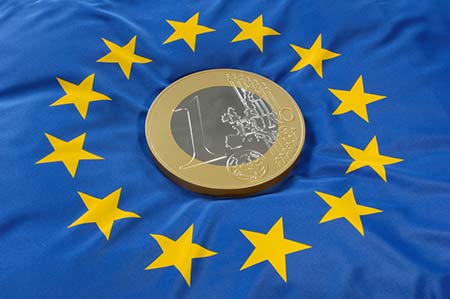The Euro may have broadly softened yesterday following the European Central Bank’s rate decision but the Euro to Australian Dollar pairing still closed Australasian trading higher.
While the common currency initially climbed after policymakers left interest rates and policy unchanged, the dovish comments issued by ECB President Mario Draghi after the event saw the Euro pare gains.
Draghi intimated that the Governing Council was prepared to adjust policy at June’s meeting.
The prospect of further stimulus put the Euro under pressure and saw it headed for its first five-day decline against the US Dollar for three weeks.
However, the ‘Aussie’ posted widespread declines overnight as investors digested the Reserve Bank of Australia’s monthly monetary policy statement.
As well as intimating that policy would remain accommodative for the foreseeable future, the RBA cut its inflation rate forecast for June.
The RBA stated; ‘A degree of spare capacity will be present for much of the forecast period. The current accommodative monetary policy setting is likely to be appropriate for some time yet. […] The economy continues to face some significant headwinds, with the large decline in resources sector capital spending getting underway and fiscal consolidation in prospect. [However] A pronounced increase in dwelling investment is underway, and recent information suggests that the upswing this year is likely to be a little larger than was forecast three months ago’.
To this end, the RBA modestly increased its domestic growth forecast for June from 2.75 per cent to 3 per cent.
As regards the exchange rate, the RBA noted that it expects the Australian Dollar to move lower over time.
The Australian Dollar weakened against several of its major currency counterparts after the report was published.
China’s inflation data also came in below forecasts, piling additional pressure on the commodity-driven ‘Aussie’.
The Euro to AUD exchange rate remained slightly stronger even after Germany’s trade data massively disappointed expectations on Friday.
German imports were shown to have fallen by 0.9 per cent in March, month-on-month, rather than rising the 0.6 per cent expected.
Exports declined by 1.8 per cent, significantly worse that the 1.3 per cent increase expected. February’s export figure was also negatively revised to a decline of 1.4 per cent.
Although this result was disappointing, as economist Holger Schmieding observed; ‘While some pundits may claim that the small drop in output in March could herald a loss of momentum, monthly data are far too volatile to draw firm conclusions from.’
Over the weekend Australian consumer inflation expectation data could trigger further EUR/AUD movement.
Euro (EUR) Exchange Rates
[table width=”100%” colwidth=”50|50|50|50|50″ colalign=”left|left|left|left|left”]
Currency, ,Currency,Rate ,
Euro,
Euro,
Euro,
Euro,
Euro,
[/table]
